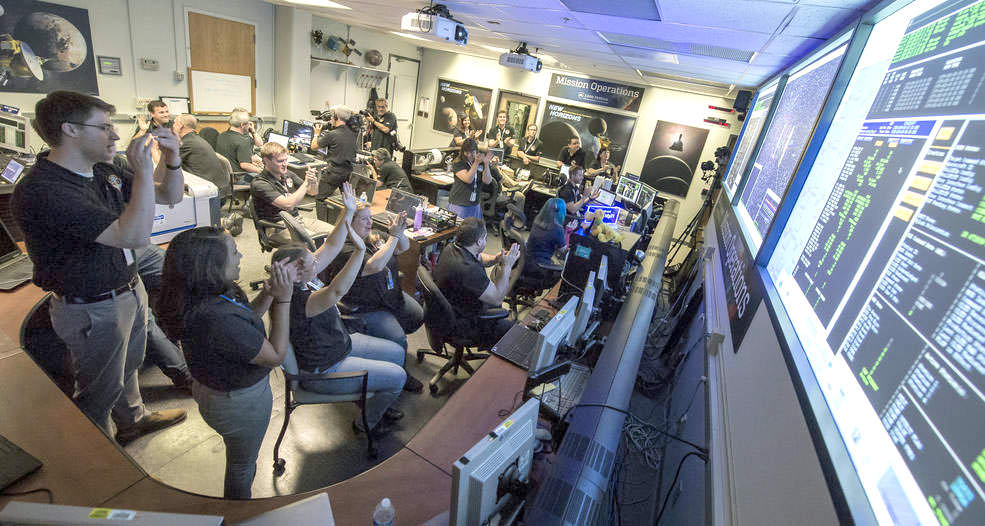Watch Pluto grow in this series of photos taken during New Horizons' approach
Whew! We're out of the woods. On schedule at 9 p.m. EDT,
phoned home telling the mission team and the rest of the on-edge world that all went well. The preprogrammed "phone call" — a 15-minute series of status messages beamed back to mission operations at the
Johns Hopkins University Applied Physics Laboratory
in Maryland through NASA's
— ended a tense 21-hour waiting period.
The team deliberately suspended communications with New Horizons until it was beyond the Pluto system, so the spacecraft could focus solely on data gathering. With a mountain of information now queued up, it's estimated it will take 16 months to get it all back home. As the precious morsels arrive bit by byte, New Horizons will sail deeper into the Kuiper Belt looking for new targets until it ultimately departs the Solar System.
[caption id="attachment_121384" align="aligncenter" width="580"]
After Pluto, NASA hopes to send New Horizons to another asteroid or two in the Kuiper Belt to perform a flyby and reconnaissance similar to the Pluto mission. Credit: Alex Parker / SwRI[/caption]
Assuming NASA funds a continuing mission, the team hopes to direct the spacecraft to one or two additional Kuiper Belt objects (KBO) over the next five to seven years. There are presently three possible targets - PT1, PT2, and PT3. (PT = potential target). PT1, imaged by the Hubble Space Telescope, looks like the best option at the moment and could by reached by January 2019. If you thought Pluto was small, PT 1 is only about 25 miles (40 km) across. Much lies ahead.
[caption id="attachment_121385" align="aligncenter" width="580"]
The image at left shows a KBO at an estimated distance of approximately 4 billion miles from Earth. Its position noticeably shifts between exposures taken approximately 10 minutes apart. The image at right shows a second KBO at roughly a similar distance. Credit: NASA, ESA, SwRI, JHU/APL, and the New Horizons KBO Search Team[/caption]
 Universe Today
Universe Today
